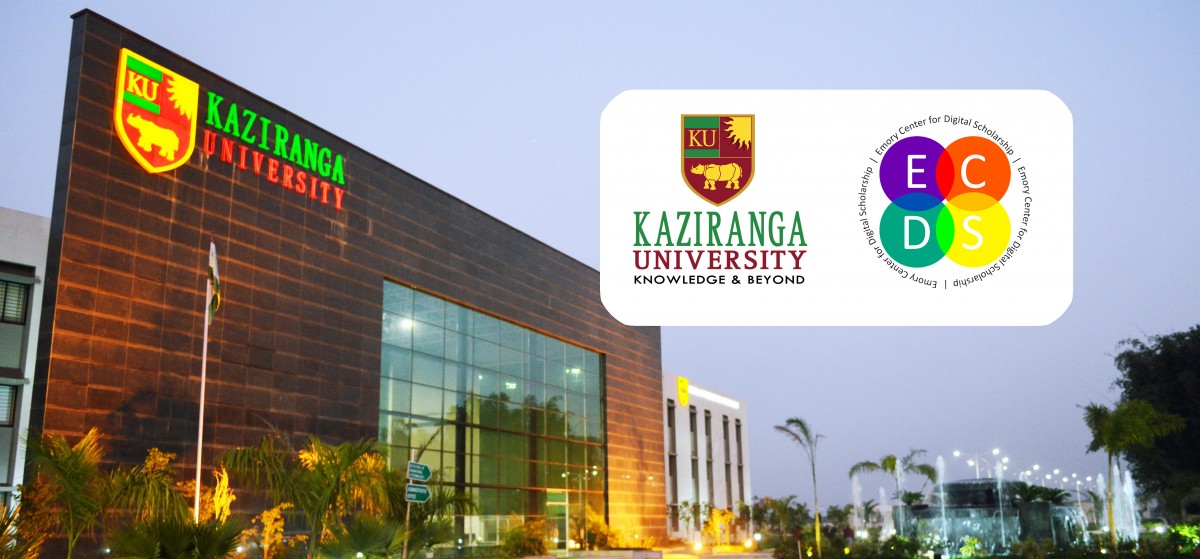Emory Center for Digital Scholarship (ECDS) is partnering with Kaziranga University’s Center for Virtual Reality (KUCVR) to develop a spatial, historical map of the ancient Ahom Kingdom in the Brahmaputra valley of Assam, India. As part of this collaboration, ECDS will help KUCVR with technical support through subject matter expertise. ECDS will also provide a project team of qualified professionals to help plan and execute the development of the approved digital project.
On May 24th, 2019, both of the participating institutions signed a memorandum of understanding in good faith to further collaborative research and enhance scholarship in the field of historical mapping. ECDS will help train Kaziranga University students with the new paradigms of data visualization such as Geographic Information System (GIS), augmented reality (AR) and virtual reality (VR) to enable the students to contribute and sustain the digital project. Training will be provided through an online webinar series.
ECDS is working with Emory University’s Halle Institute for Global Research in this partnership. The Halle Institute for Global Research promotes and enhances scholarship across Emory University’s nine schools. It supports individual and collaborative research, short- and long-term visits from distinguished international scholars and students engaged in research outside of the United States.
Historical Background and the Importance of Preserving Culture
The Ahom dynasty (1228–1826) ruled the Ahom kingdom in present-day Assam, India for nearly 598 years. The Ahom kingdom was established in 1228 when the first Ahom king Chao Lung Sukapha (r. 1228 – 1268) came from Mong Mao which is now included within the Dehong-Dai Singhpho of China and entered the Brahmaputra valley, crossing the rugged Patkai mountain range. He was accompanied by his three queens, two sons, several nobles and their families, other officials and families, and soldiers estimating more than nine thousand persons. He crossed the Patkai and reached Namruk (Namrup) on 1228 and occupied a region on the south bank with the Burhidihing river in the north, the Dikhau river in the south and the Patkai mountains in the east. He befriended the local groups, the Barahi, and the Marans and finally settled his capital at Charaideo where he established the offices of the Dangarias—the Burhagohain and the Borgohain.
Understanding one’s history and preserving one’s culture is more than just knowing the titles, events, and occasions related to one’s ancestors. To better recognize Ahom kingdoms ancestry, it is necessary to understand something of the places and time in which they lived. Knowing this would enable us to design and recreate maps that would allow us to navigate through those times in history in a more accessible manner. ECDS is pleased to help and partner with Kaziranga University’s Center for Virtual Reality in this endeavor.
References:
- Gait, Edward (1906), A History of Assam, Thacker, Spink & Co, Calcutta
- Bhuyan, Surya Kumar (1932), Deodhai Buranji, Shillong: DHAS
- Barua Sadar-amin, Harakanta (1930), Assam Buranji or a History of Assam, Shillong: DHAS.
